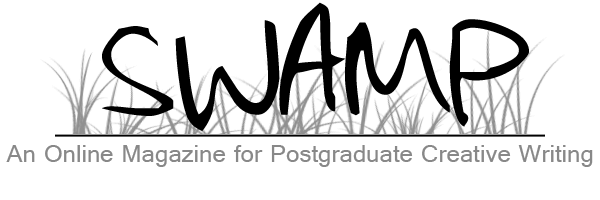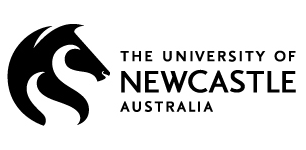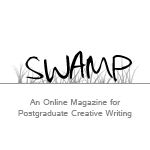Belly Breathing
Pradhnya Tajne (RMIT University, Australia)
Lygon Street, Melbourne, is busy as usual. While I gaze at the plethora of colours and sounds created by the buzzing traffic, neon restaurant lights and people walking on the street, I take a moment to check if it’s there. I lightly put my hand on my stomach and take a few deep breaths. Yes, it’s still there…
Breath is one of the basic foundations of meditative practice and many meditations begin by asking you to take a few deep breaths. According to Eastern spiritual philosophy, breath is a vehicle for prana – the very essence of life. Prana revitalises you: the more prana you have, the more alive and energetic you are; a sick person will have less prana, less vital energy.
I remember my first encounter with meditation when I was fourteen years old. I had read everything in my school library and was searching for new material when I picked up a book from my father’s collection. It was a book by Osho – the most controversial spiritual master; a rockstar in the world of gurus. It was a slim book – the kind you pick up at a train station, flimsy and disposable – but in it he challenged the United Nations’ declarations by calling equality a myth. Quoting Osho:
“They say that every human being is equal. And of course, it satisfies the ego of every human being – nobody objects. It is one of the most dangerous lies to tell human beings. I say to you, equality is a myth.”
After reading a few pages of the book, I immediately shut it down. However, Osho’s views kept playing on my mind and I couldn’t help but contemplate his words. I found the courage to read more and that’s how my meditation journey began: a young girl from a small town reading Osho books, sitting on the floor, closing her eyes, taking a few breaths and trying to go to a dark, unknown space – a meditative space where she had never been before.
The more I tried to read and research “breath” though, the more mysterious it seemed. I tried to take deeper breaths, but could only manage half-breaths that didn’t fill my chest. I felt a block in my breathing like there was this pressure in my chest that wouldn’t allow me to breathe deeper. I became frustrated because I thought that I didn’t have enough prana in my body and that made me feel I was not a whole, healthy person.
Belly breathing is how it is supposed to be. It is very simple, yet many of us breathe using our chests. Breathing from the chest is actually a stressful way of breathing. As babies, we breathe from our bellies and then as we grow up we get into a stressful habit of breathing from our chests instead. It is important to remember that breath is the master, but it is also your servant. Correct breathing can transform you. Deep calming breaths. In and out. Breathing through the diaphragm and pushing the belly out to drawn in as much oxygen as possible, then slowly releasing all the air and relaxing the belly. With breath, you can go deeper into your being. But for so long, I only ever felt it in my chest, at my heart chakra. Even still, whenever I am stressed, happy or disturbed, I feel it in my chest first and my hand automatically goes to my heart as if to rub the pain away or contain the joy.
I have tried a lot of meditation techniques over the years – sometimes obsessed with Tantra, sometimes with Yoga – on my journey to deepen my breath. During one semester break, I travelled to India and worked at the Osho International Meditation Resort in Pune for a month in their publishing house and joined the “Work as Meditation” program. This place is a hidden paradise with looming bamboo, dancing peacocks, cheerful maroon-clad people and live music all surrounding you.
While there, I participated in one of the most powerful Osho Active Meditations – at an ungodly hour in the morning – called Dynamic Meditation. The first part is chaotic breathing where you breathe hard and fast without any rhythm and continuously break your breathing pattern. Again, I wasn’t able to do this correctly because of my inability to breathe deeply into my belly. People at the resort kept talking about their hara – the centre – which is in your belly just two inches below your navel. I hadn’t found mine yet either. In fact, I felt I was wasting my time, hopeless at meditation and stuck on my inner journey.
After I finished the program at the resort, I wanted to find an app to allow me to meditate without a group. I came across one called “Insight Timer”. In the thousands of free guided meditations on offer, there is one called “Deep Belly Breathing” by meditation teacher, Grace Darling. This simple, thirteen-minute meditation has completely transformed my practice. I spent hundreds of dollars on a trip to India to learn to meditate and, as it turned out, all I needed was to follow a simple, free practice by Sydney-based Grace at home in Melbourne.
Now, I feel I can finally breathe deeper – take a lot of oxygen into my system and really exhale to empty my lungs – and, with practice, it gets easier and more natural to feel my hara. And so, when I start to get stressed or slip into overdrive standing on a busy street and I feel those half-breaths starting again, I just pause and find my breath.
Pradhnya Tajne is a student at RMIT University about to complete her Masters of Writing and Publishing. She has experience in content writing and editing. During her internship with Writers Victoria, she proofread the magazine, ‘Victorian Writer’. At the student-led publishing house, Bowen Steet Press (BSP) at RMIT, she has produced many trade and electronic books including Rabbit Poetry journal, Silver Linings and an iBook for Parks Victoria.






